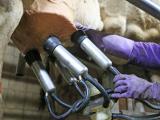Feb 14, 2011
H5N1 hits more poultry in South Korea, Bangladesh
Agriculture officials in South Korea yesterday confirmed two more H5N1 outbreaks at commercial poultry farms, both near Seoul, Agence France-Presse (AFP) reported. The findings at farms in Hwaseong, south of Seoul, and Dongducheon to the north prompted the culling of 8,400 ducks and chicken at the locations. They are the nation's first H5N1 outbreaks since Feb 11, when the World Organization for Animal Health (OIE) confirmed an outbreak on farms near Pyeongtaek, Gyeonggi province. South Korea has been battling H5N1 outbreaks since December 2010, which has led to the culling of 5.45 million poultry at 250 farms, according to the AFP report.
Feb 13 AFP story
Feb 11 OIE report
Elsewhere, Bangladesh has reported six more poultry outbreaks, most
of them at poultry farms, according to an OIE report yesterday. Four occurred in Dhaka division, with the other two striking Rangpur division. The virus killed 2,530 birds at the sites, and 11,747 more were destroyed to help contain the disease. In addition, officials confirmed an H5N1 outbreak at a private farm in Sadullapur upazila, in the country's northern Rajshahi division, the Dhaka-based Daily Star reported today. The farm's owner had reported poultry deaths over the past few days, and the presence of the H5N1 virus was confirmed at a regional lab. A team from the district livestock office culled about 1,000 poultry at the farm.
Feb 13 OIE report
Feb 14 Daily Star story
Pandemic H1N1 dominates Europe's flu hot spots
Flu activity is still increasing in some parts of the World Health Organization's (WHO's) European Region, with rising flu activity reported in 27 countries, mainly in central, southeastern, and eastern areas, according to its most recent Euroflu report, which covers the week ending Feb 6. The percentage of respiratory specimens in patients with flu-like illness that tested positive for flu remained high, at 46%. The areas of most intense activity are Georgia, Luxembourg, and three Russian regions. Flu-related hospitalization have reached their highest seasonal rates so far in Armenia, Georgia, Kazakhstan, Kyrgyzstan, Romania, the Republic of Moldova, Russia, Serbia and Ukraine. The 2009 H1N1 virus is the dominant strain in countries reporting the highest flu activity, and influenza B has taken over as the most common strain in some areas that have passed their peak. Genetic analysis of 194 flu viruses so far reveals that 103 were members
of the pandemic A/California/2009 H1N1 clade, with 53 others belonging to other pandemic H1N1 clades, including 25 from the recently emerged England/2010 subgroup characterized by S185T substitution in the hemagglutinin. However, the WHO added that 98% of antigenically characterized viruses so far are similar to the ones included in this season's flu vaccine. The Euroflu bulletin covers flu activity in the WHO's 53 European Region countries, which includes parts of Asia.
Feb 11 WHO European Region flu update
NJ hospital employees exposed to TB
Thirty-four employees at HealthSouth Rehabilitation Hospital in Toms River, N.J., have tested positive for exposure to tuberculosis (TB), but none are sick with TB, according to a Feb 12 report in the Daily Record, a newspaper based in Parsippany, N.J. Patty Ostaszewski, chief executive officer of the hospital, said in a statement that a county and state review of patients treated at the facility over the past year has not identified any known TB patients, and a patient or visitor could have exposed the staff to TB. She said the exposure turned up during routine employee testing in January and February. An investigation is continuing, and more testing is under way, officials told the Daily Record. Patients who tested positive for TB exposure underwent a chest x-ray, and the hospital said no active cases were found, meaning there is no risk to other patients or employees.





















